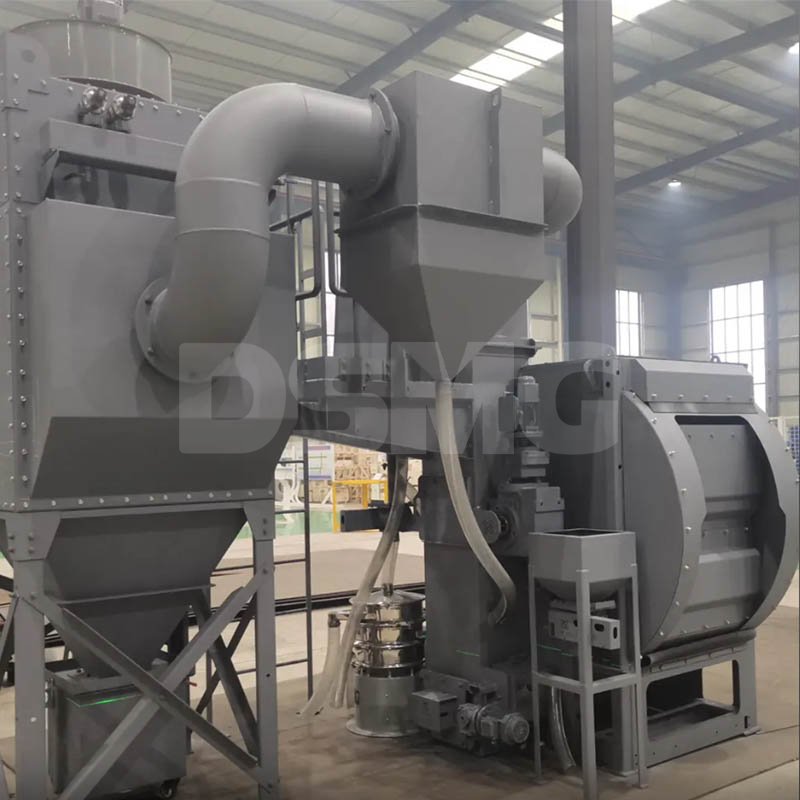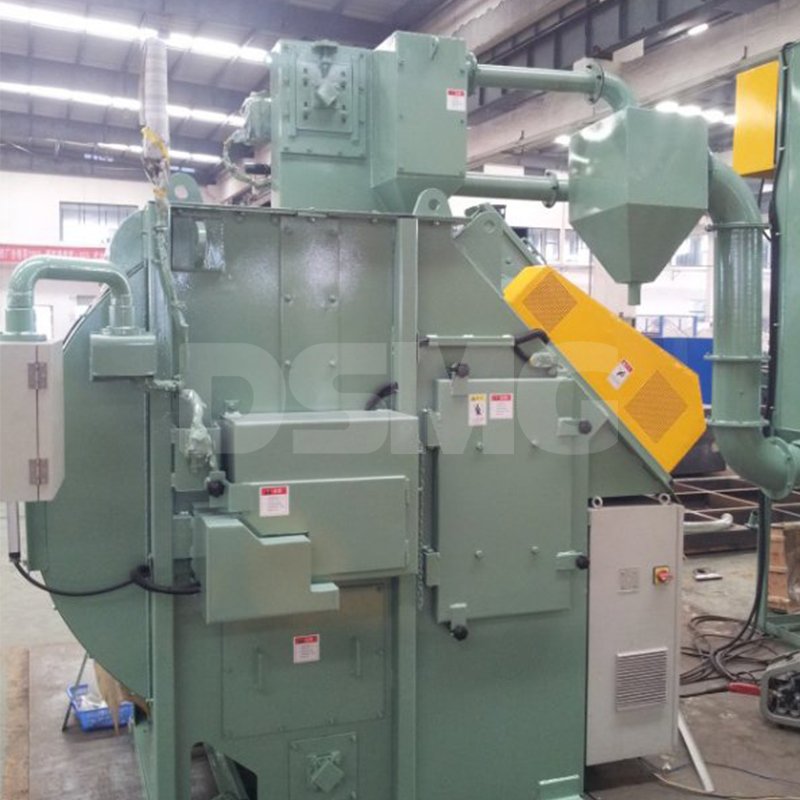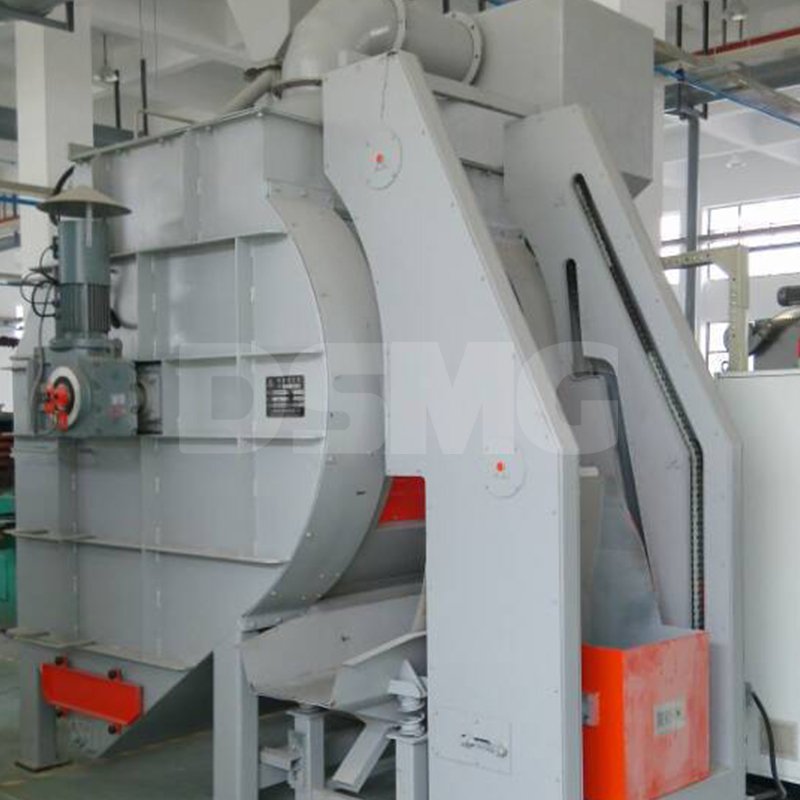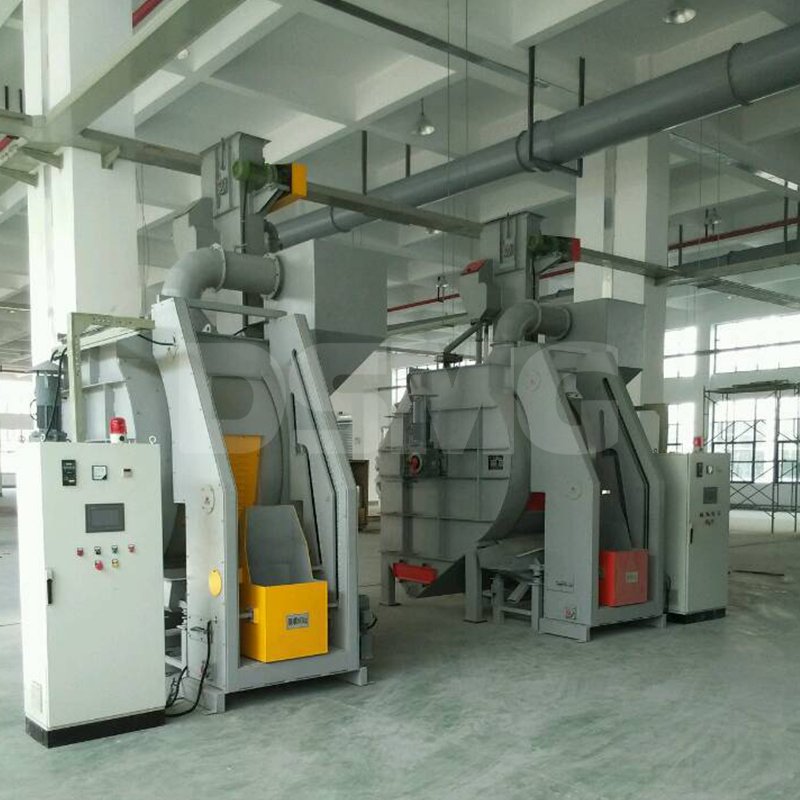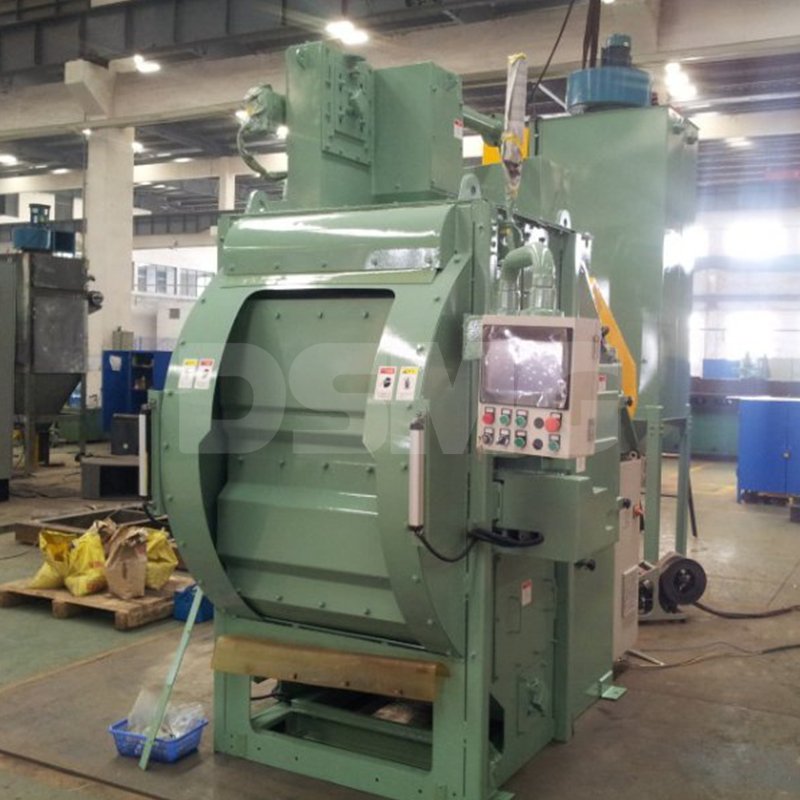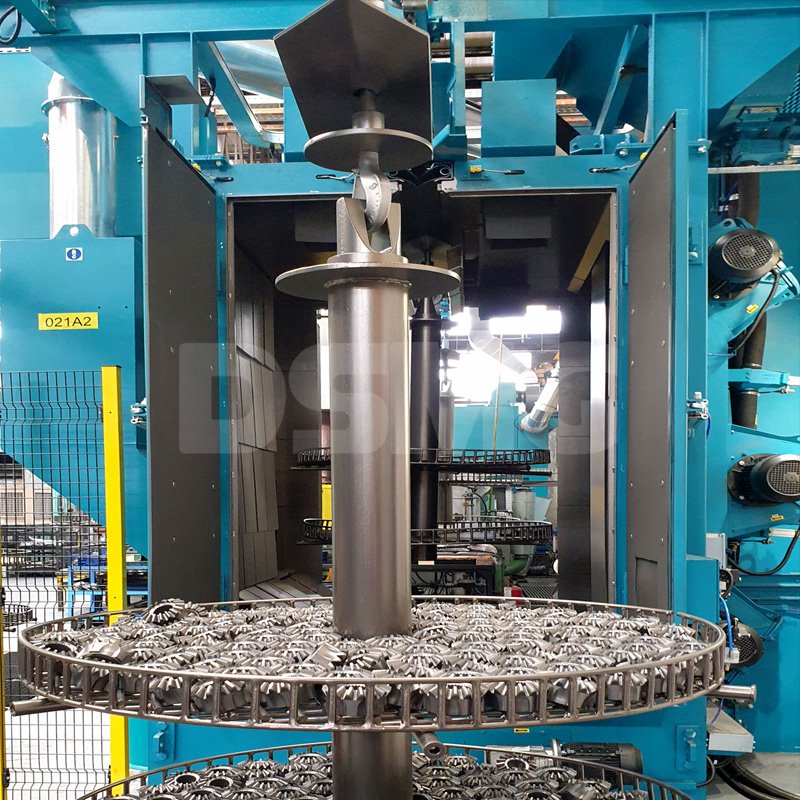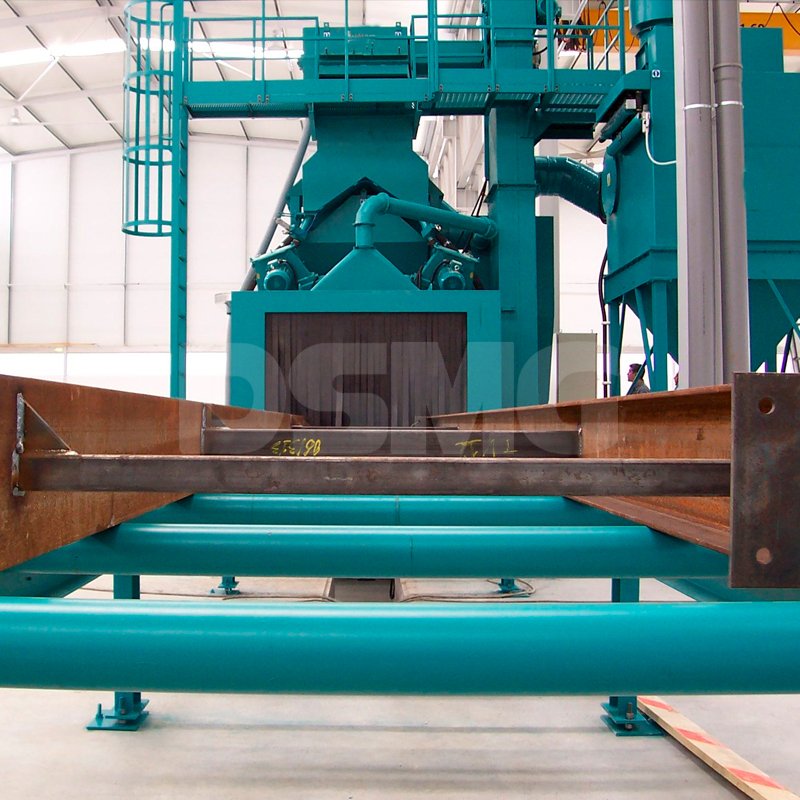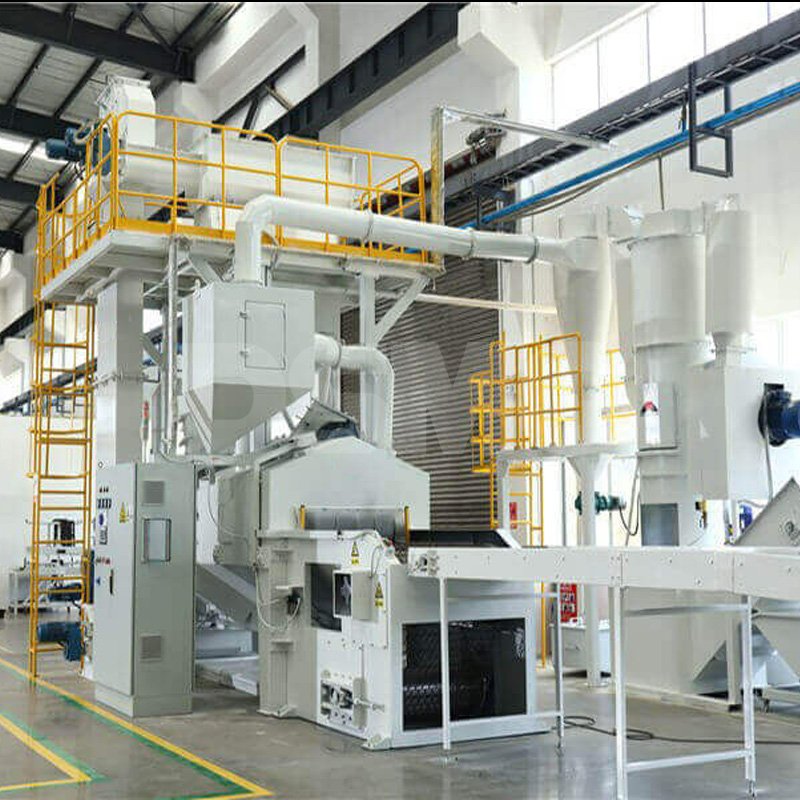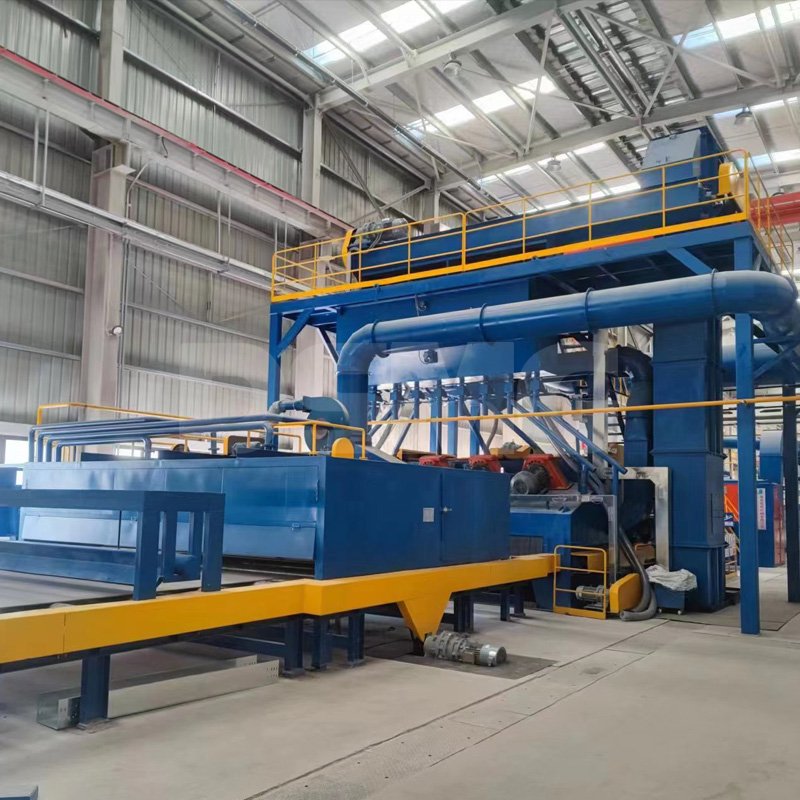The DSGT150 rotary drum shot blasting machine is elaborately designed specifically for the processing of small parts. The small holes on the drum, which are 4 millimeters in diameter, enable extremely tiny workpieces to be processed. The drum adopts an integrated manufacturing process, so that parts can be prevented from being clamped inside the machine. Moreover, the drum can be completely emptied with ease, thus preventing individual workpieces from being processed repeatedly.
The drum is made of perforated high-manganese steel, which has excellent wear resistance. The size of the holes depends on the size of the workpieces, and is also affected by the quantity of abrasive particles and the amount of discharged abrasives.
The drum shot blasting system performs outstandingly in significantly reducing the number of parts used and maintenance costs, and it can also improve production efficiency. It is applied to the surface pretreatment of customers' castings, aiming to ensure that the surfaces of the castings can fully contact with the shot blasting medium and minimize the damage to customers' products.
The DSGT150 rotary drum shot blasting machine is equipped with a 15kw high-performance shot blaster. The abrasive valve is right above the shot blaster. Once the loading process finishes, the drum moves to the shot blasting position and the shot blasting chamber closes simultaneously. The drum of the chamber is made of 12mm thick wear-resistant high Mnsteel. During the shot blasting process, workpieces are constantly turned over as the drum rotates. The control cabinet houses a system controller and a programmable logic controller (PLC) for storing programs.
Operation sequence of the machine:
Workpieces are placed in factory-standard turnover baskets. The feeder lifts them and brings them to the front of the machine door, which then opens immediately. When at the correct height, the workpieces are unloaded into the drum. The control can be done either by the PLC or manually. At this point, the drum is in the loading position. Before the blasting process starts, the door closes and the drum swings to the ideal position in front of the high-performance shot blaster while rotating around its own axis.
After the blasting process ends, the drum swings to the unloading position and is lowered for unloading. The shot-blasted parts are conveyed to the basket through the vibrating discharge chute, ensuring no abrasive remains on the workpieces. Used steel shots are recycled continuously. The recovery funnel under the shot blasting chamber sends the used and dusty materials to the bucket conveyor via the screw conveyor. Once at the top cleaning station, the abrasives are air-cleaned to remove dust and undersized particles, and the waste gases are sent to the cartridge dust collector.
The shot blasting process begins and lasts until all workpieces are thoroughly mixed and shot blasted. The interior of the blasting chamber is lined with materials highly resistant to steel blasting media. The main lining in the direct injection area of the high-performance shot blaster consists of high-strength and replaceable steel plates. During the blasting process, the door stays closed and can only be reopened when the chamber is dust-free, which takes about 10 - 15 seconds. A slight vacuum is used to extract the dust generated during the blasting process and separate it in the relevant filtering system.
Operation sequence of the machine:
Workpieces are placed in factory-standard turnover baskets. The feeder lifts them and brings them to the front of the machine door, which then opens immediately. When at the correct height, the workpieces are unloaded into the drum. The control can be done either by the PLC or manually. At this point, the drum is in the loading position. Before the blasting process starts, the door closes and the drum swings to the ideal position in front of the high-performance shot blaster while rotating around its own axis.
After the blasting process ends, the drum swings to the unloading position and is lowered for unloading. The shot-blasted parts are conveyed to the basket through the vibrating discharge chute, ensuring no abrasive remains on the workpieces. Used steel shots are recycled continuously. The recovery funnel under the shot blasting chamber sends the used and dusty materials to the bucket conveyor via the screw conveyor. Once at the top cleaning station, the abrasives are air-cleaned to remove dust and undersized particles, and the waste gases are sent to the cartridge dust collector.
The shot blasting process begins and lasts until all workpieces are thoroughly mixed and shot blasted. The interior of the blasting chamber is lined with materials highly resistant to steel blasting media. The main lining in the direct injection area of the high-performance shot blaster consists of high-strength and replaceable steel plates. During the blasting process, the door stays closed and can only be reopened when the chamber is dust-free, which takes about 10 - 15 seconds. A slight vacuum is used to extract the dust generated during the blasting process and separate it in the relevant filtering system.
 中文版
中文版


